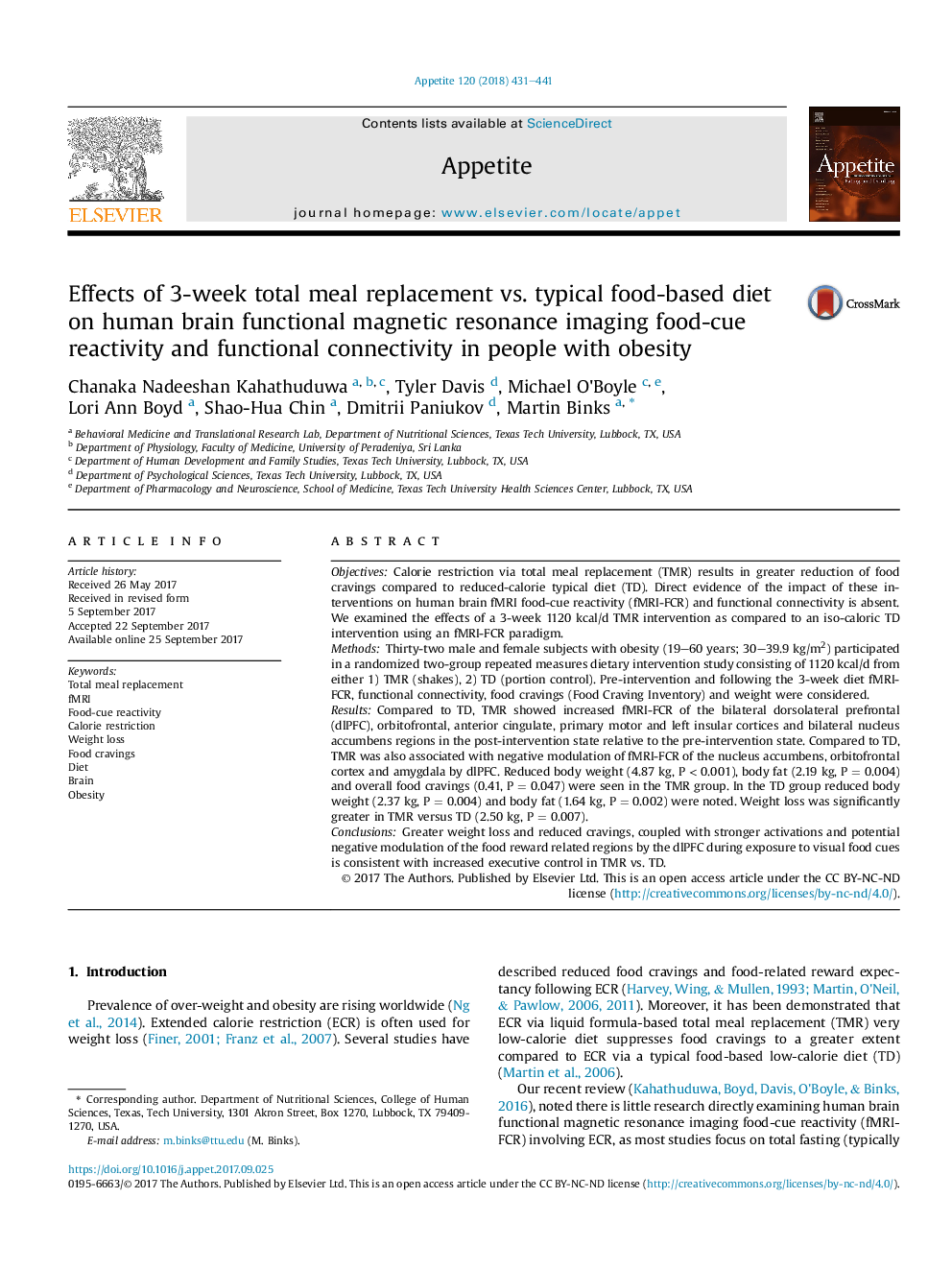| کد مقاله | کد نشریه | سال انتشار | مقاله انگلیسی | نسخه تمام متن |
|---|---|---|---|---|
| 5043955 | 1475360 | 2018 | 11 صفحه PDF | دانلود رایگان |
ObjectivesCalorie restriction via total meal replacement (TMR) results in greater reduction of food cravings compared to reduced-calorie typical diet (TD). Direct evidence of the impact of these interventions on human brain fMRI food-cue reactivity (fMRI-FCR) and functional connectivity is absent. We examined the effects of a 3-week 1120Â kcal/d TMR intervention as compared to an iso-caloric TD intervention using an fMRI-FCR paradigm.MethodsThirty-two male and female subjects with obesity (19-60 years; 30-39.9Â kg/m2) participated in a randomized two-group repeated measures dietary intervention study consisting of 1120Â kcal/d from either 1) TMR (shakes), 2) TD (portion control). Pre-intervention and following the 3-week diet fMRI-FCR, functional connectivity, food cravings (Food Craving Inventory) and weight were considered.ResultsCompared to TD, TMR showed increased fMRI-FCR of the bilateral dorsolateral prefrontal (dlPFC), orbitofrontal, anterior cingulate, primary motor and left insular cortices and bilateral nucleus accumbens regions in the post-intervention state relative to the pre-intervention state. Compared to TD, TMR was also associated with negative modulation of fMRI-FCR of the nucleus accumbens, orbitofrontal cortex and amygdala by dlPFC. Reduced body weight (4.87Â kg, PÂ <Â 0.001), body fat (2.19Â kg, PÂ =Â 0.004) and overall food cravings (0.41, PÂ =Â 0.047) were seen in the TMR group. In the TD group reduced body weight (2.37Â kg, PÂ =Â 0.004) and body fat (1.64Â kg, PÂ =Â 0.002) were noted. Weight loss was significantly greater in TMR versus TD (2.50Â kg, PÂ =Â 0.007).ConclusionsGreater weight loss and reduced cravings, coupled with stronger activations and potential negative modulation of the food reward related regions by the dlPFC during exposure to visual food cues is consistent with increased executive control in TMR vs. TD.
Journal: Appetite - Volume 120, 1 January 2018, Pages 431-441
